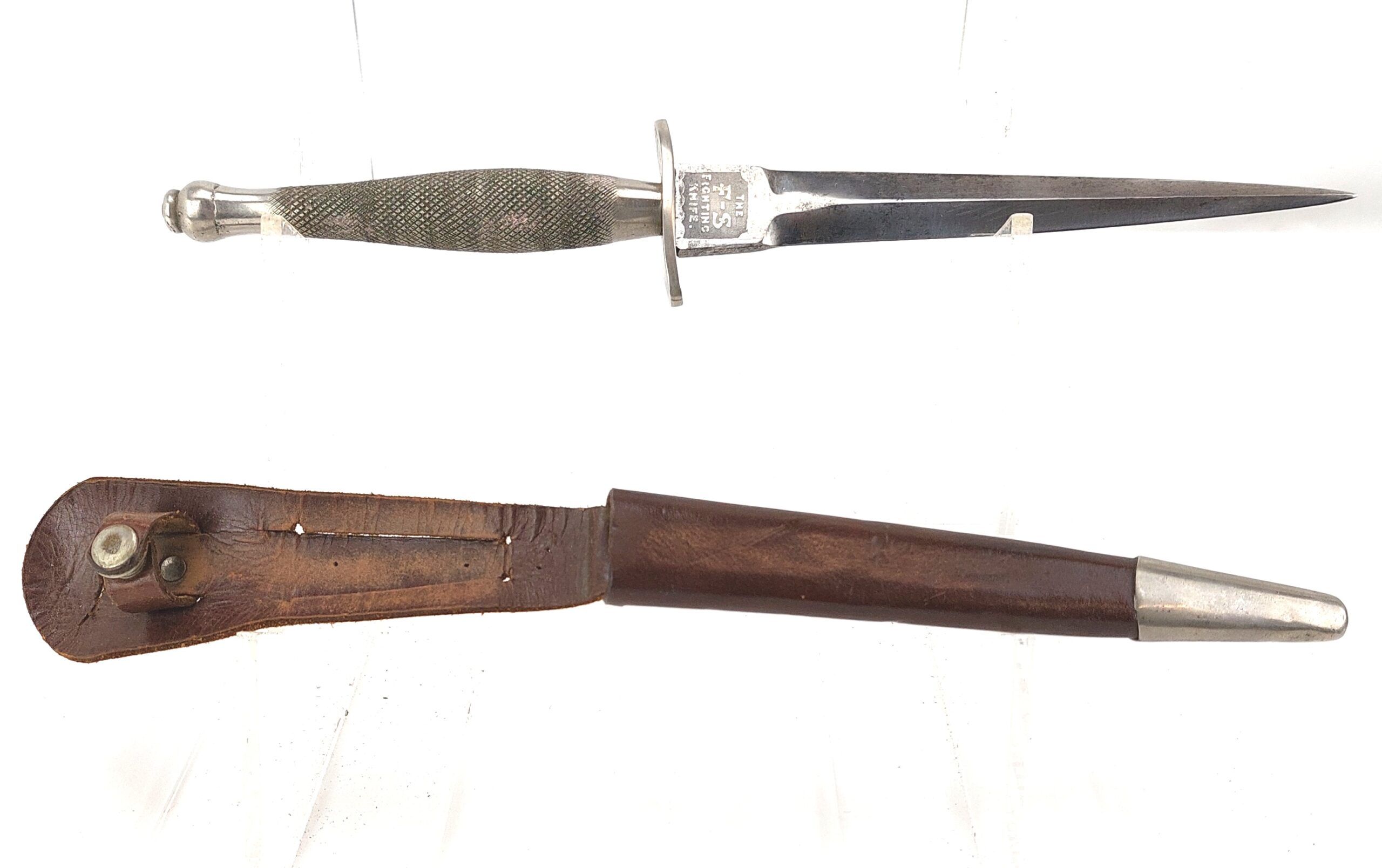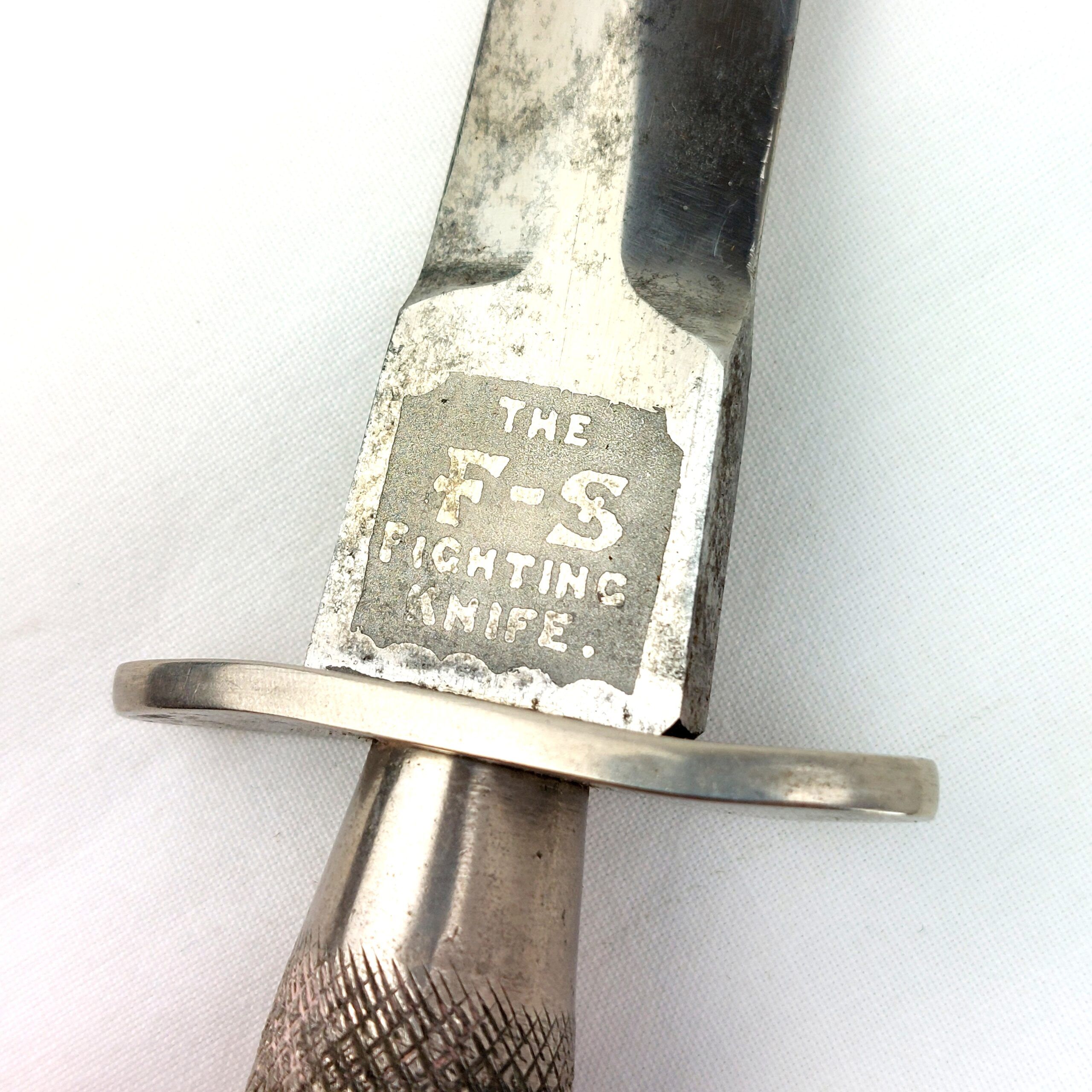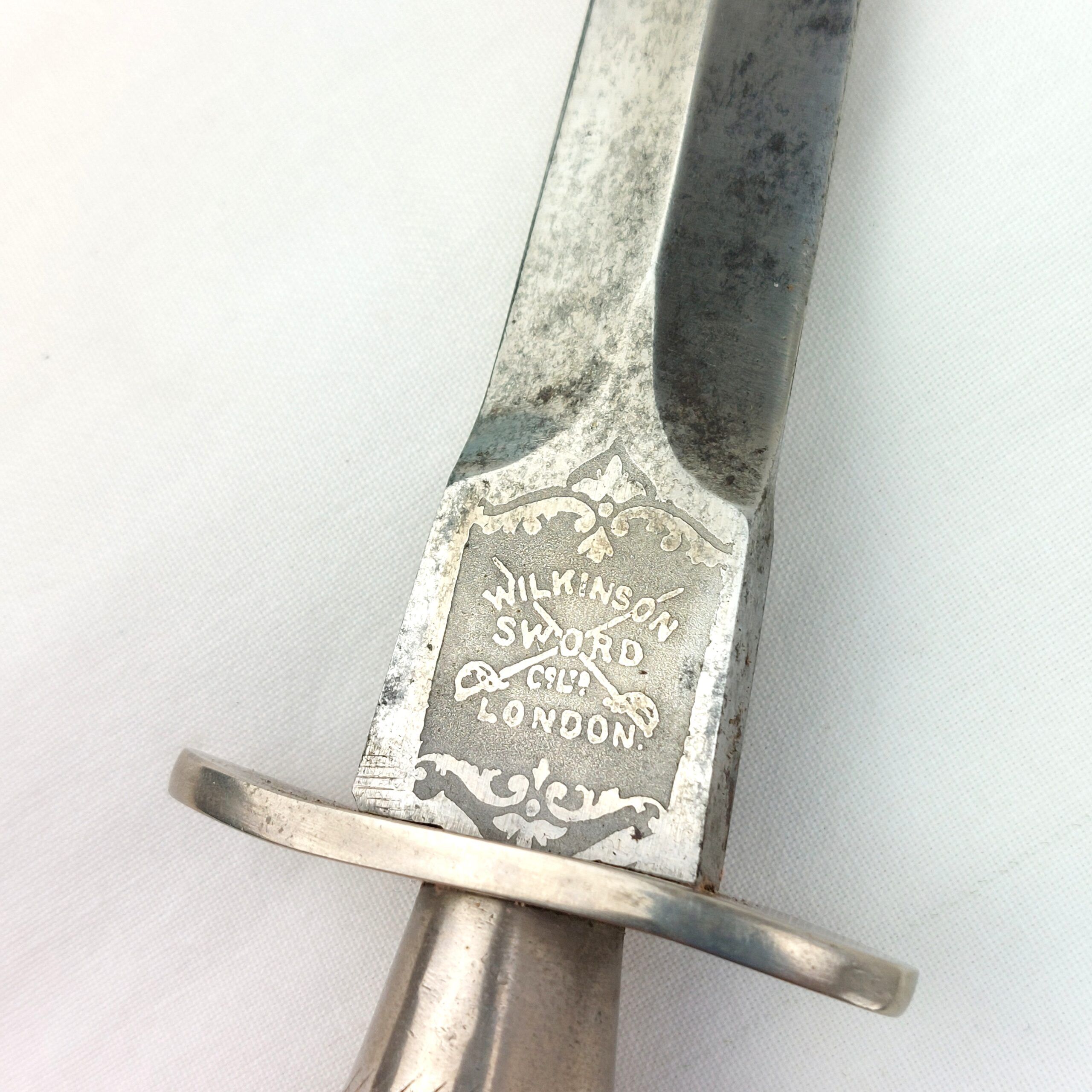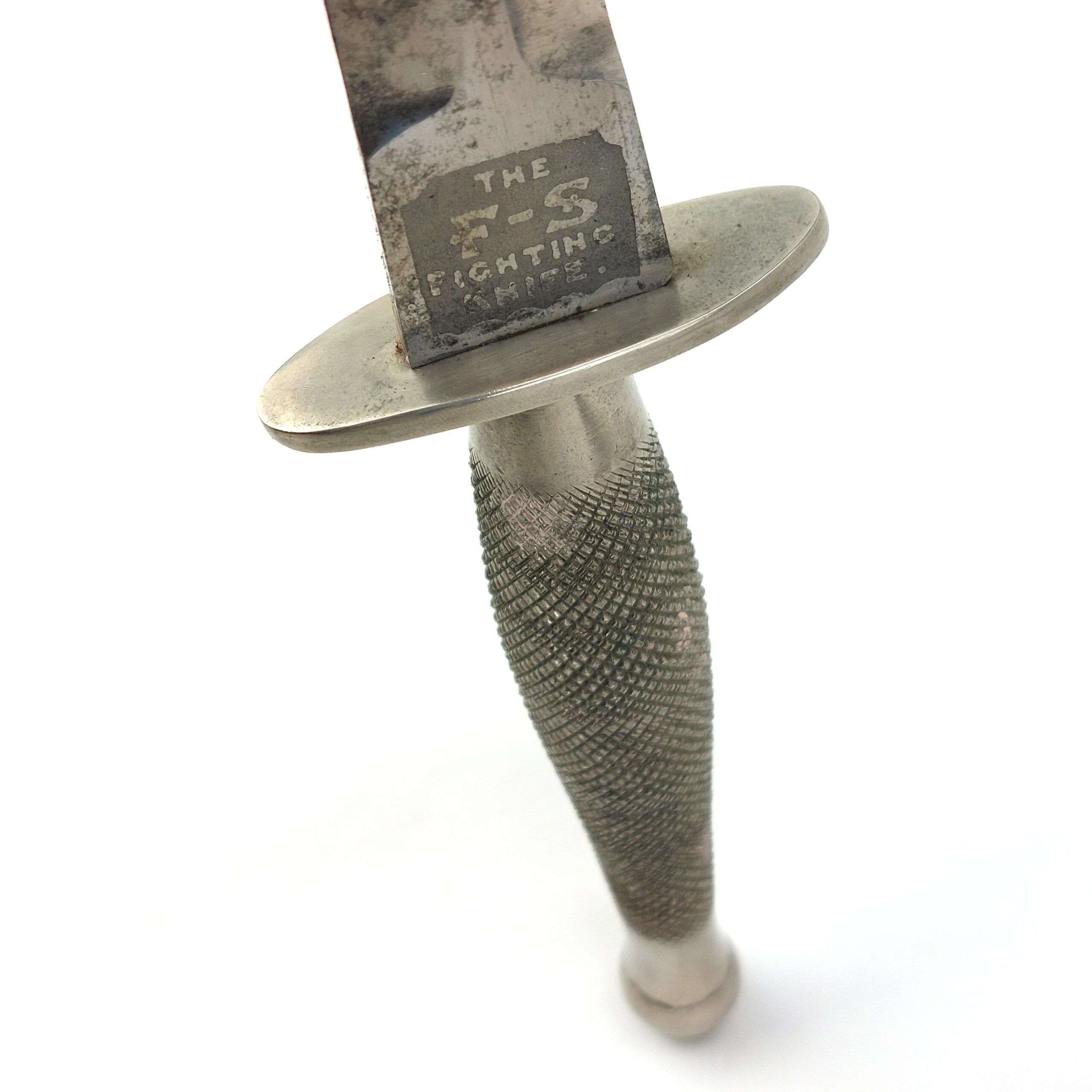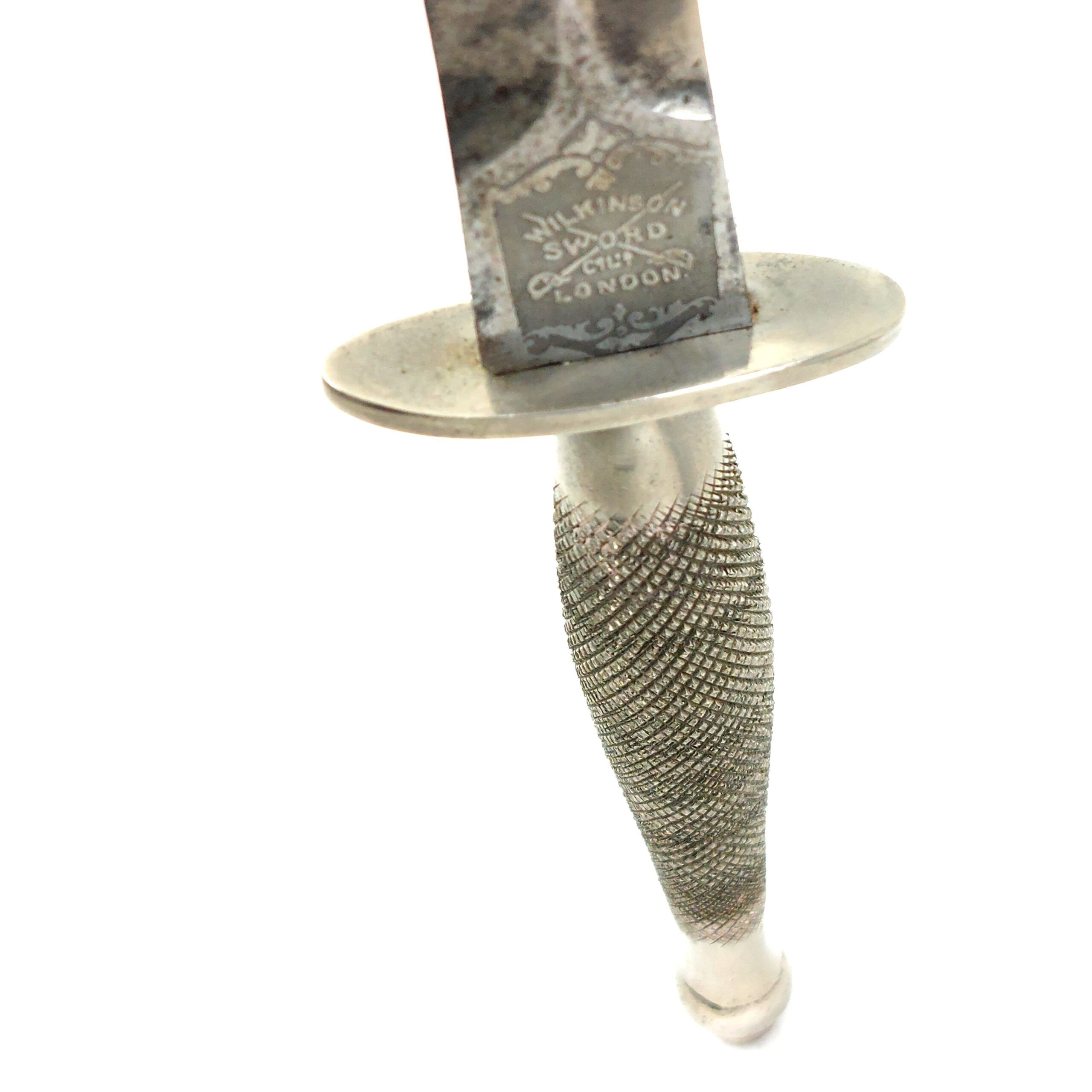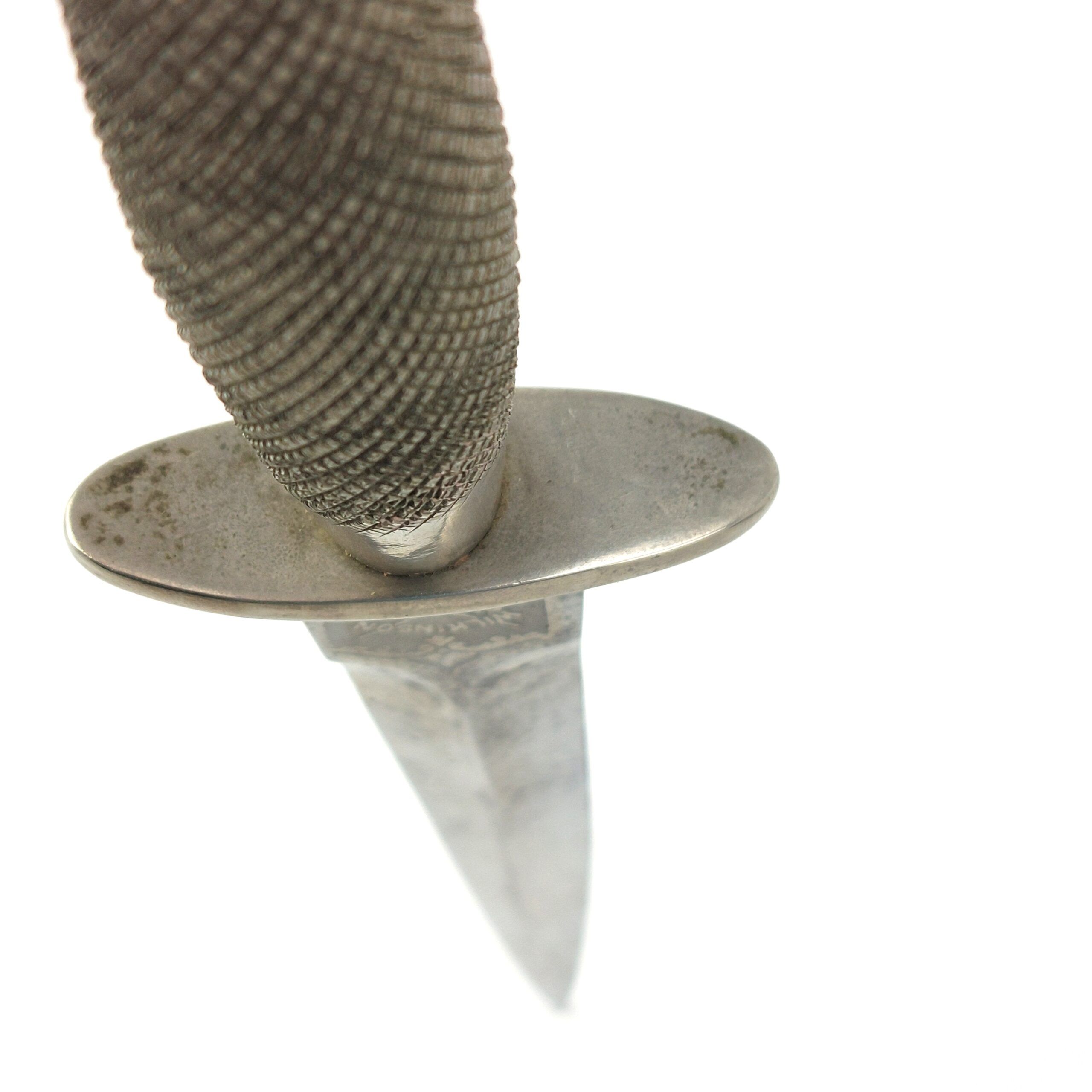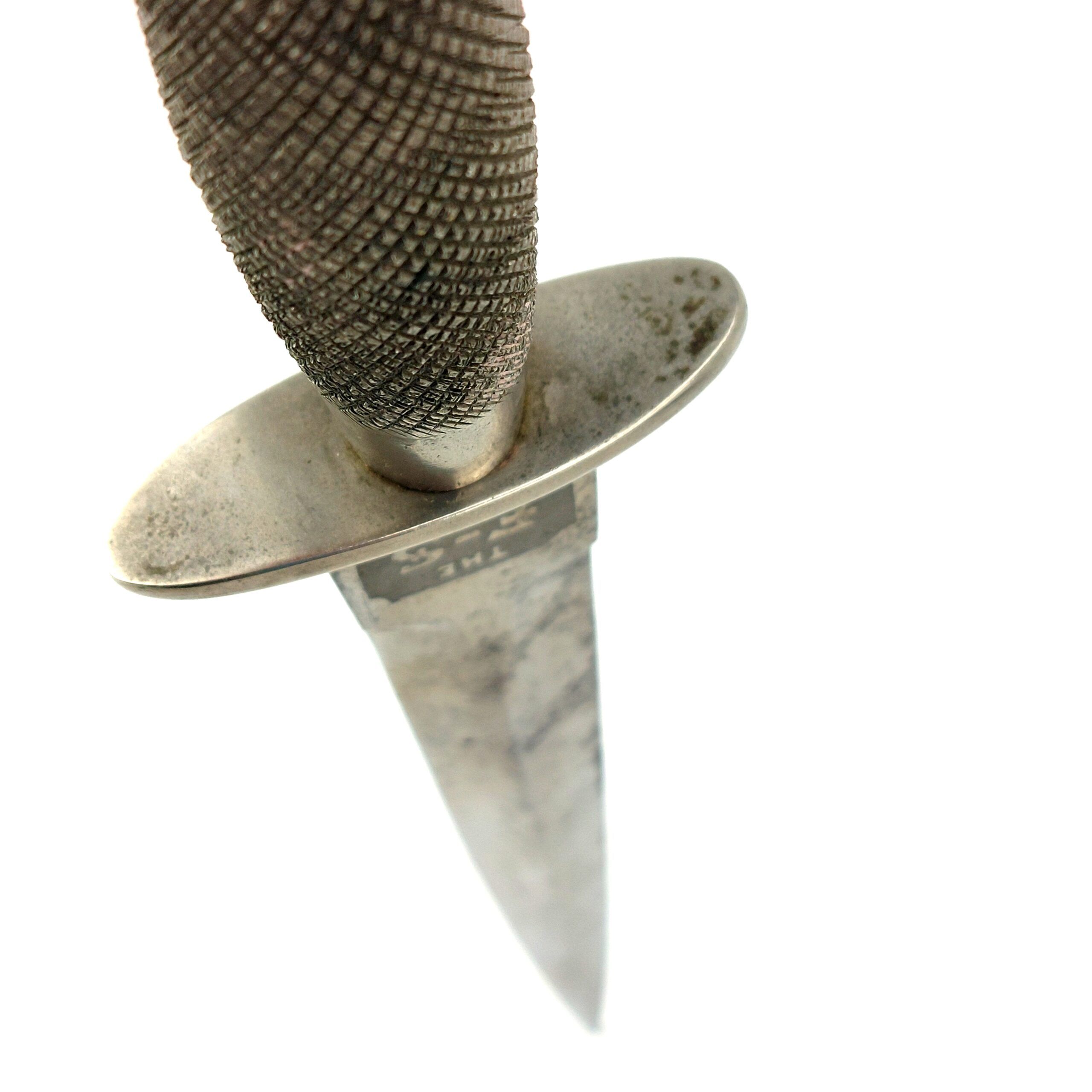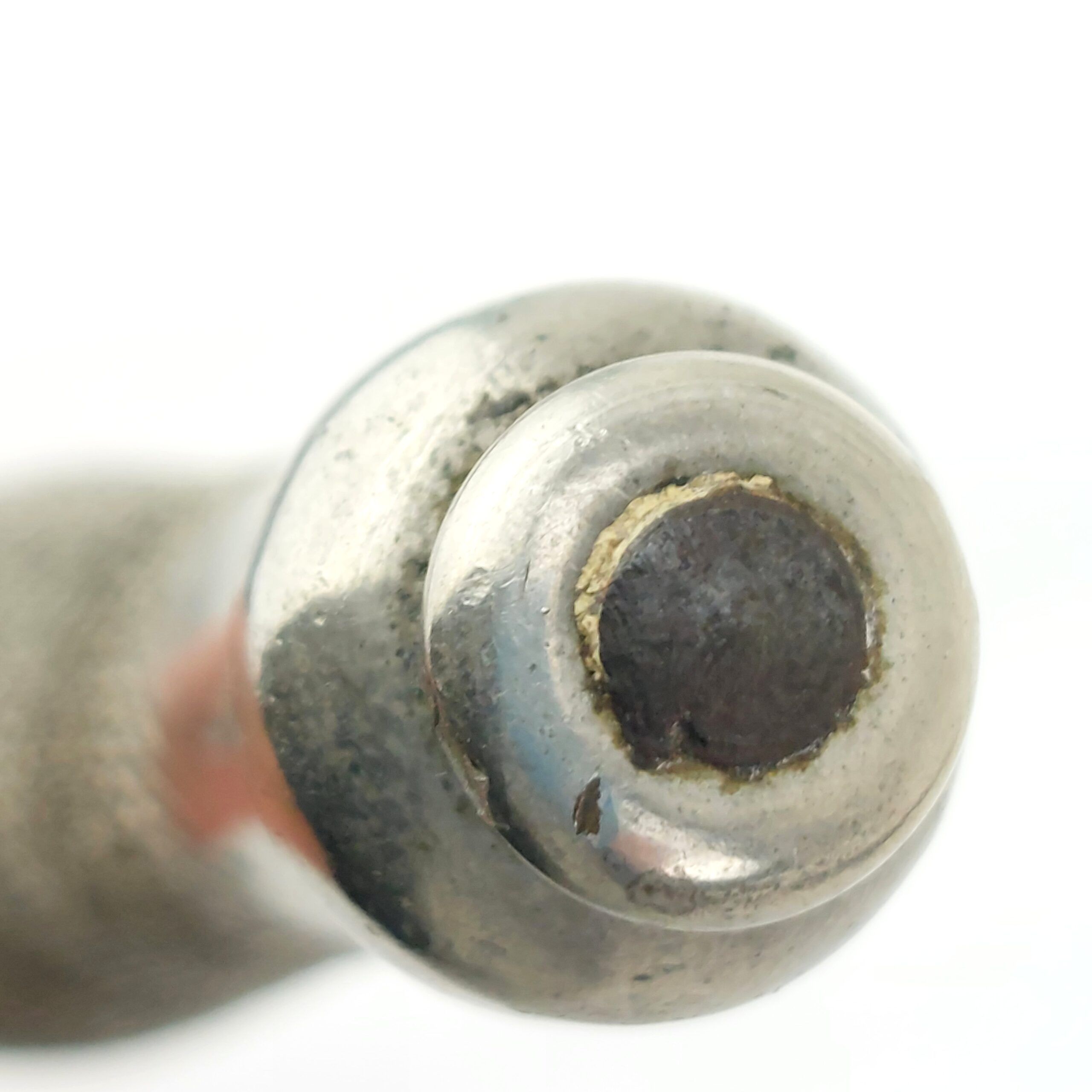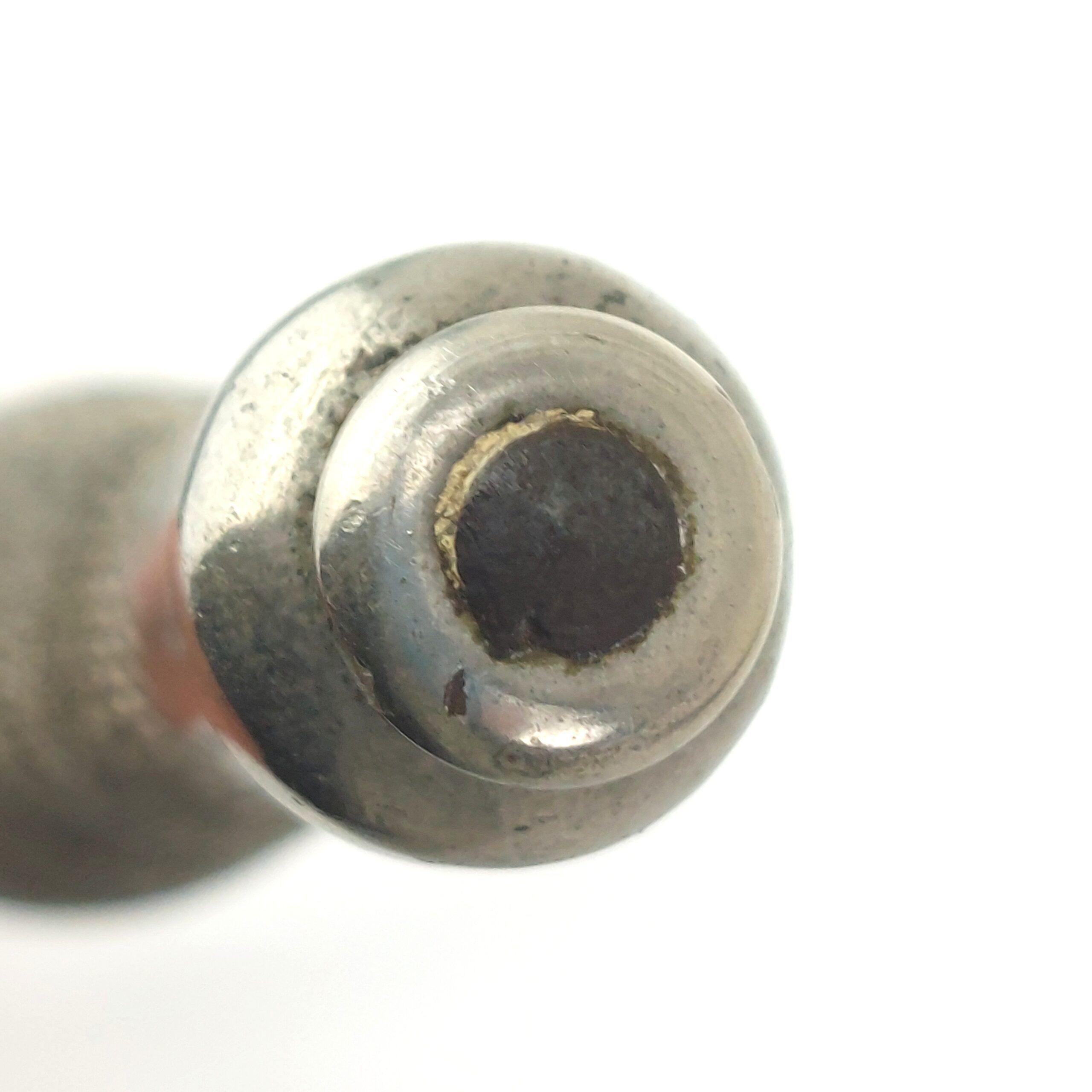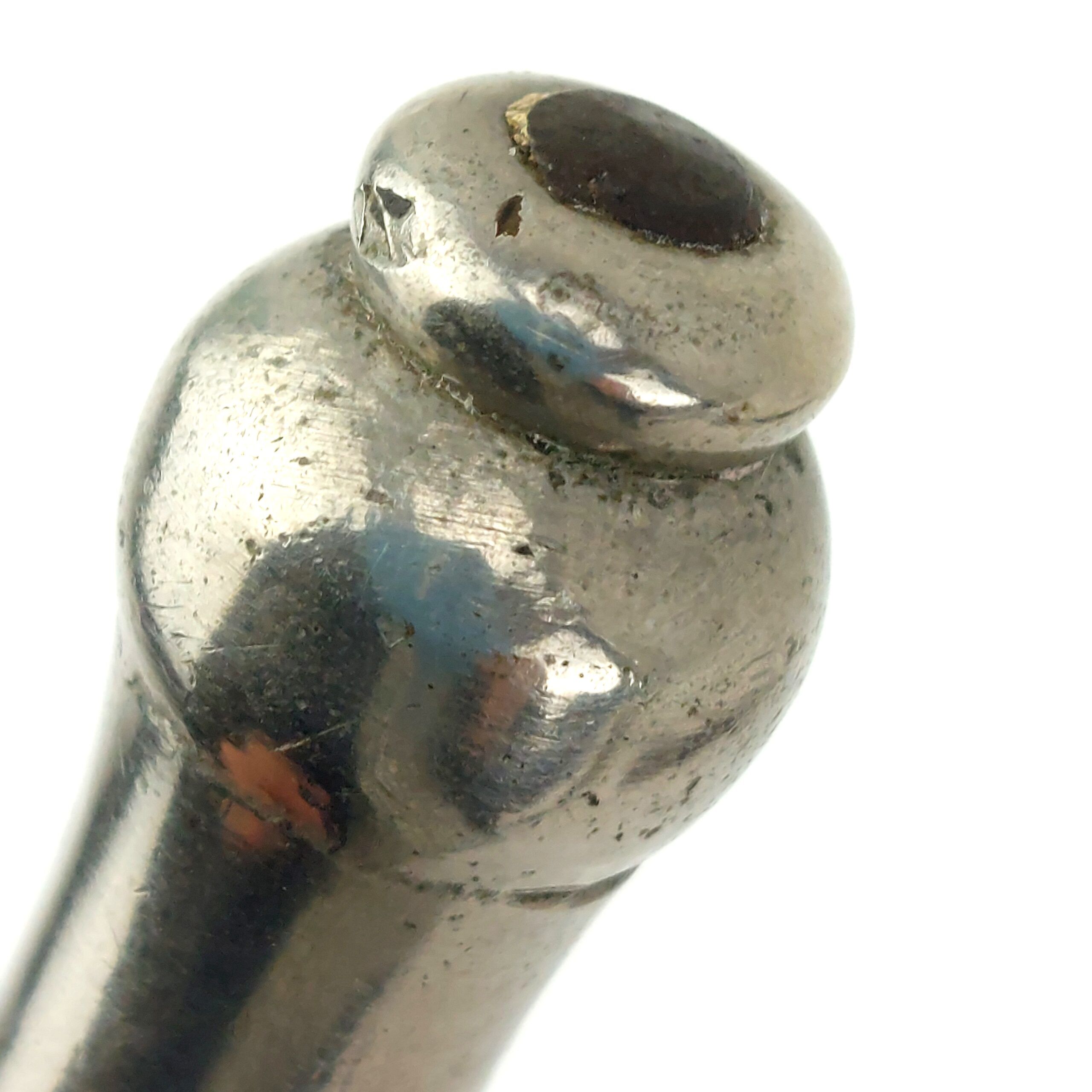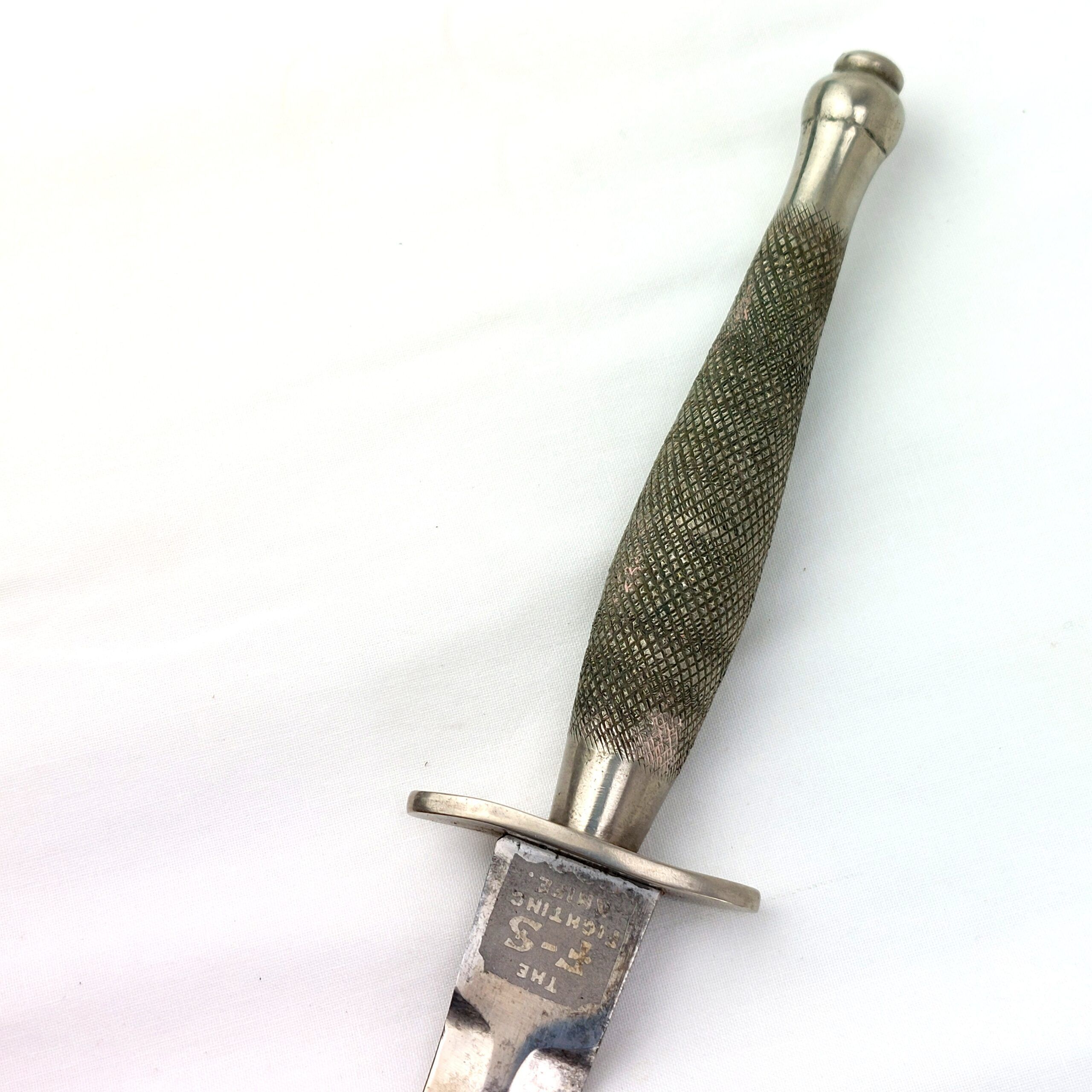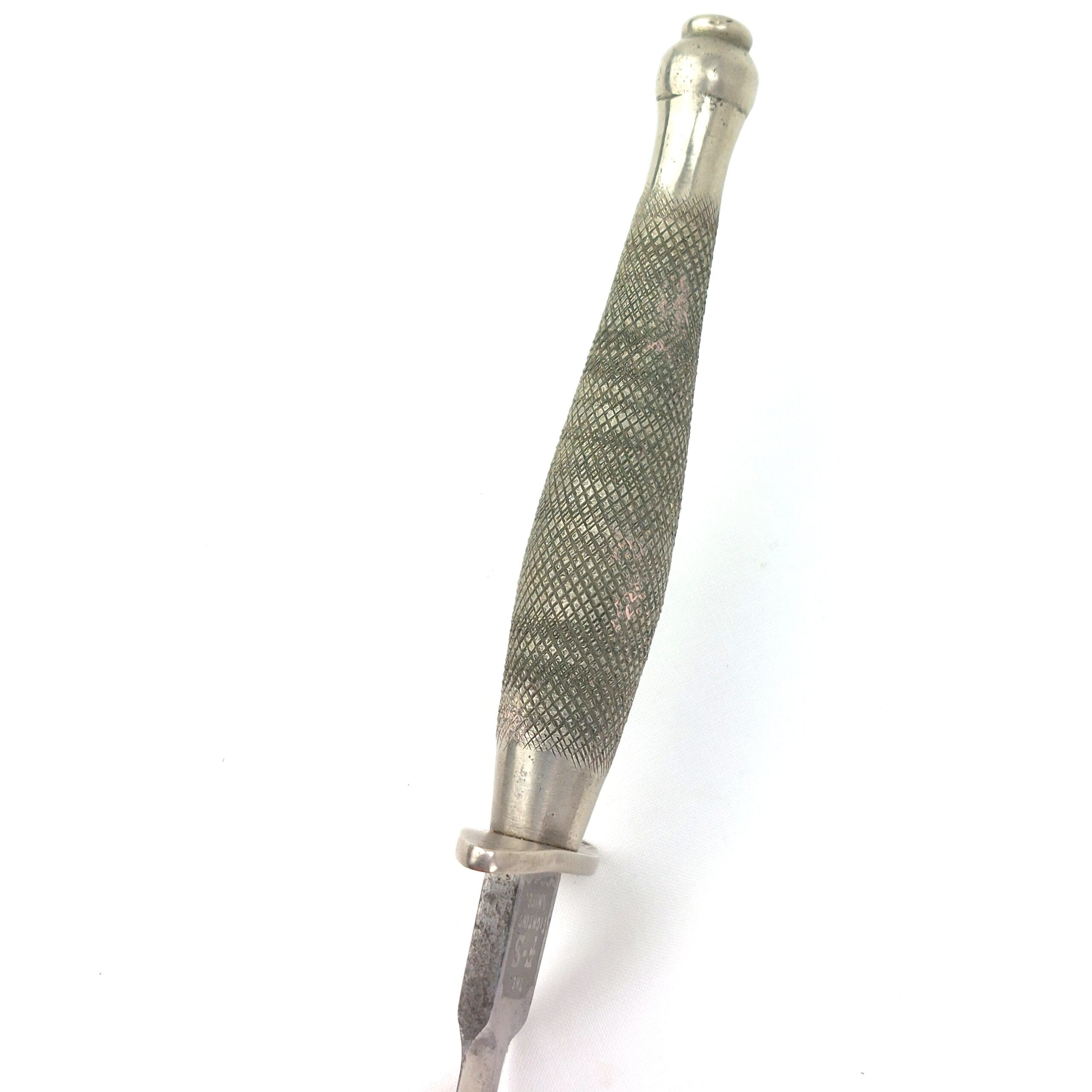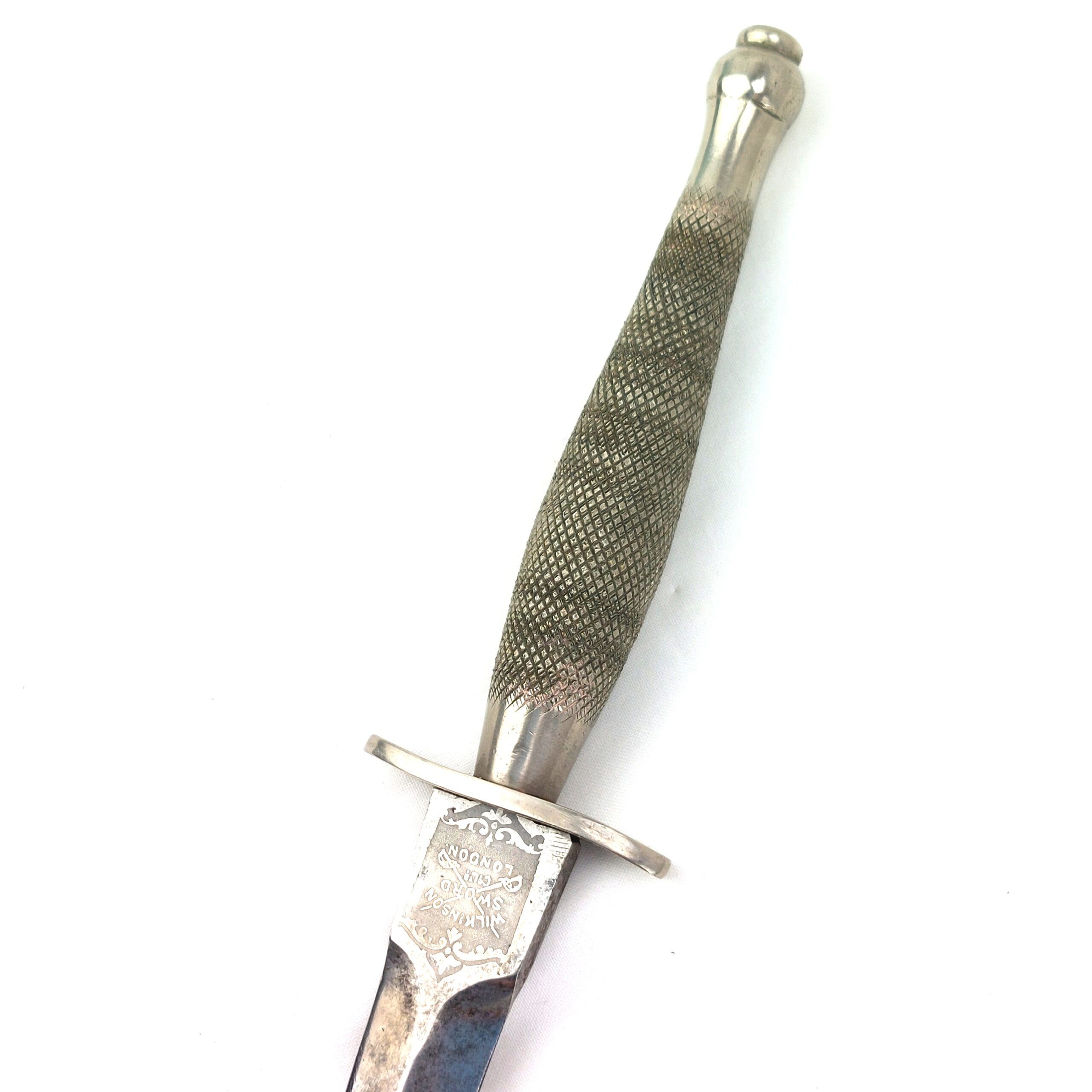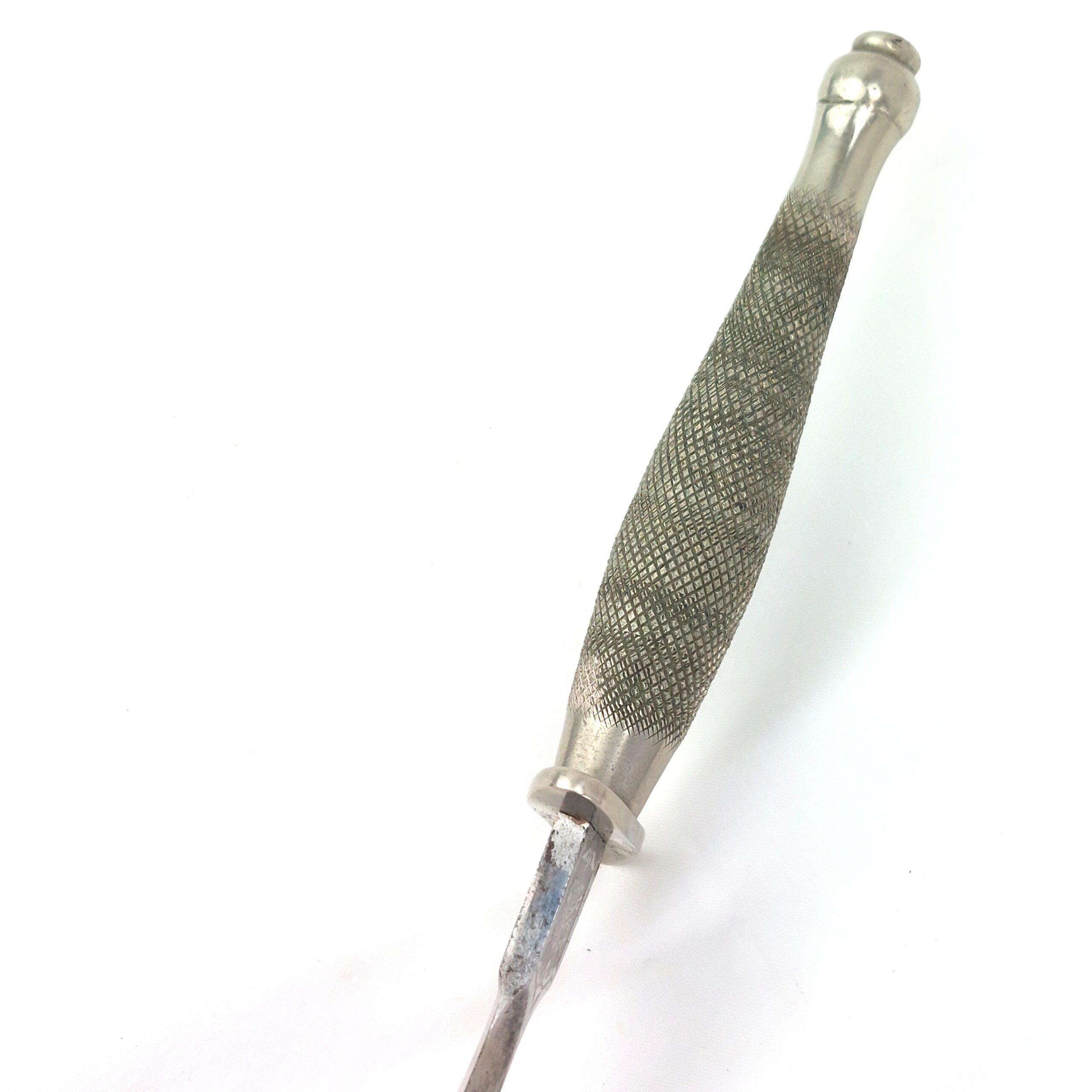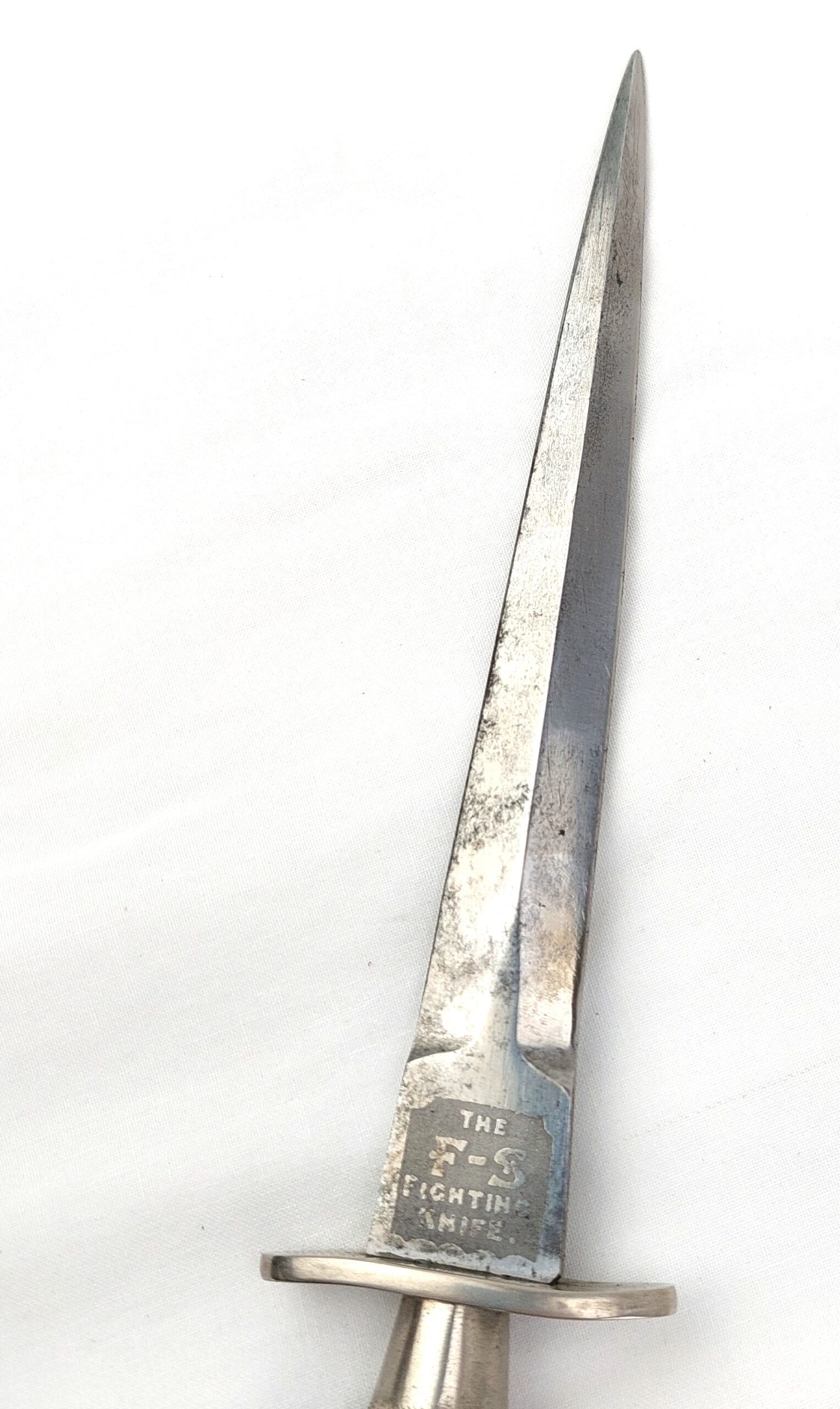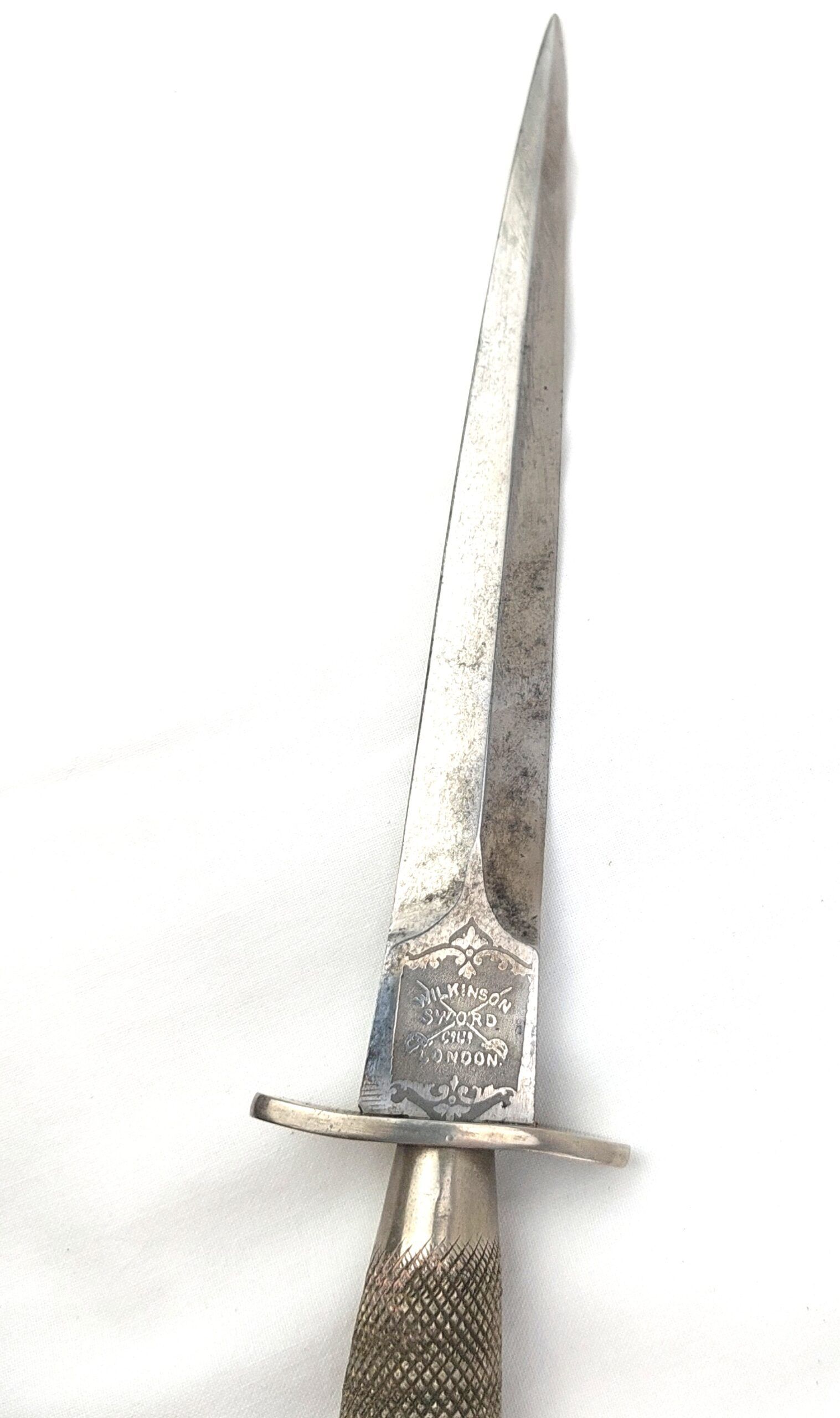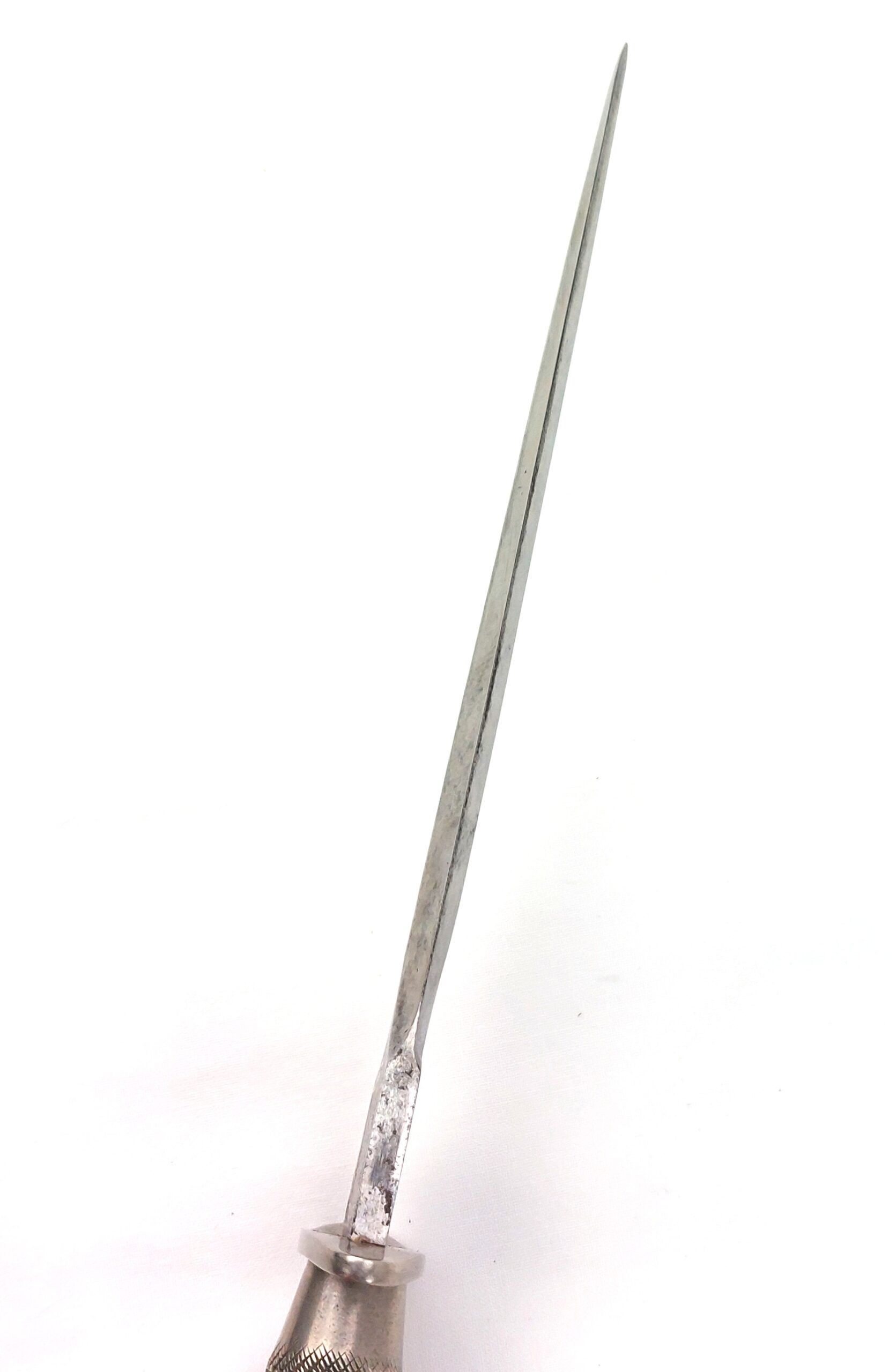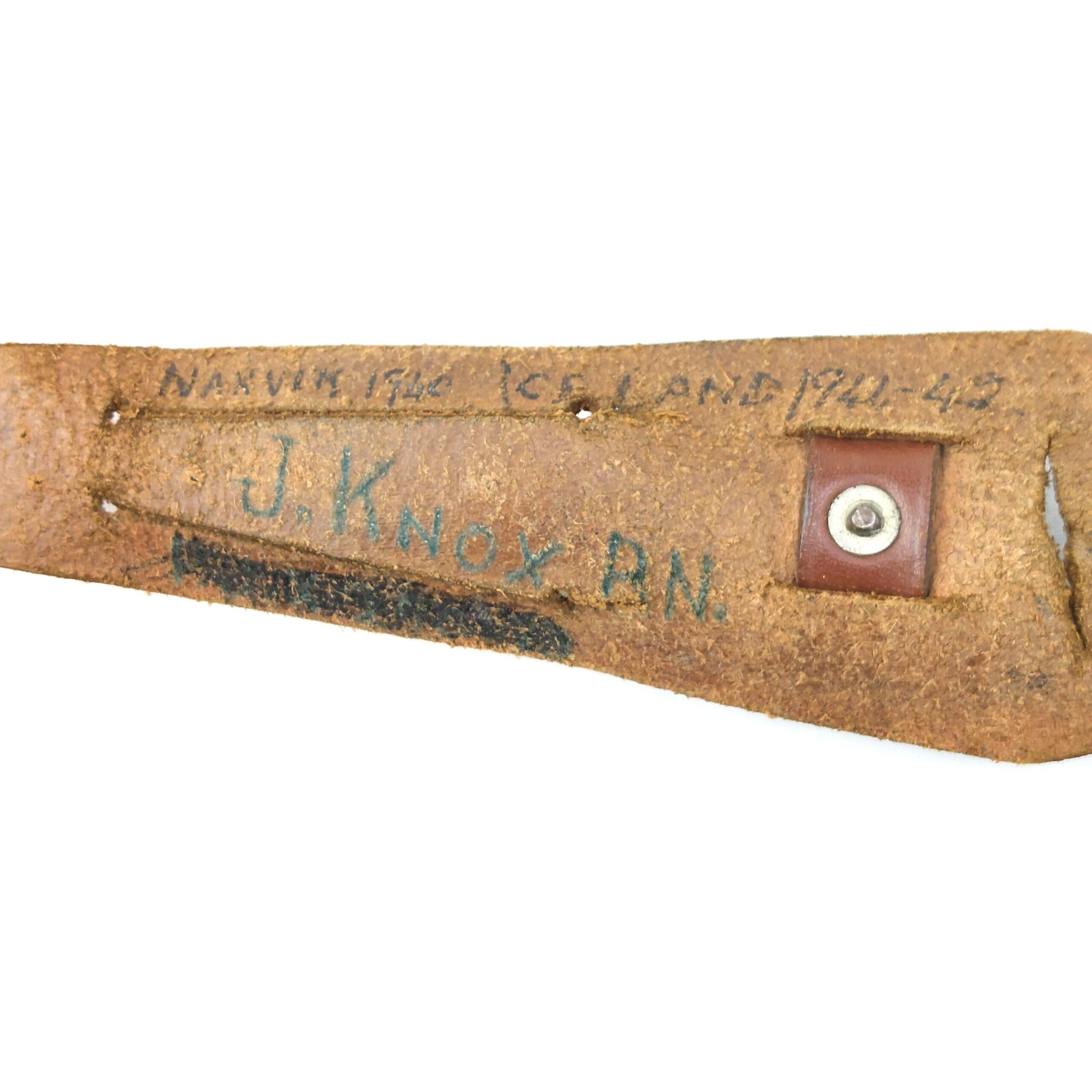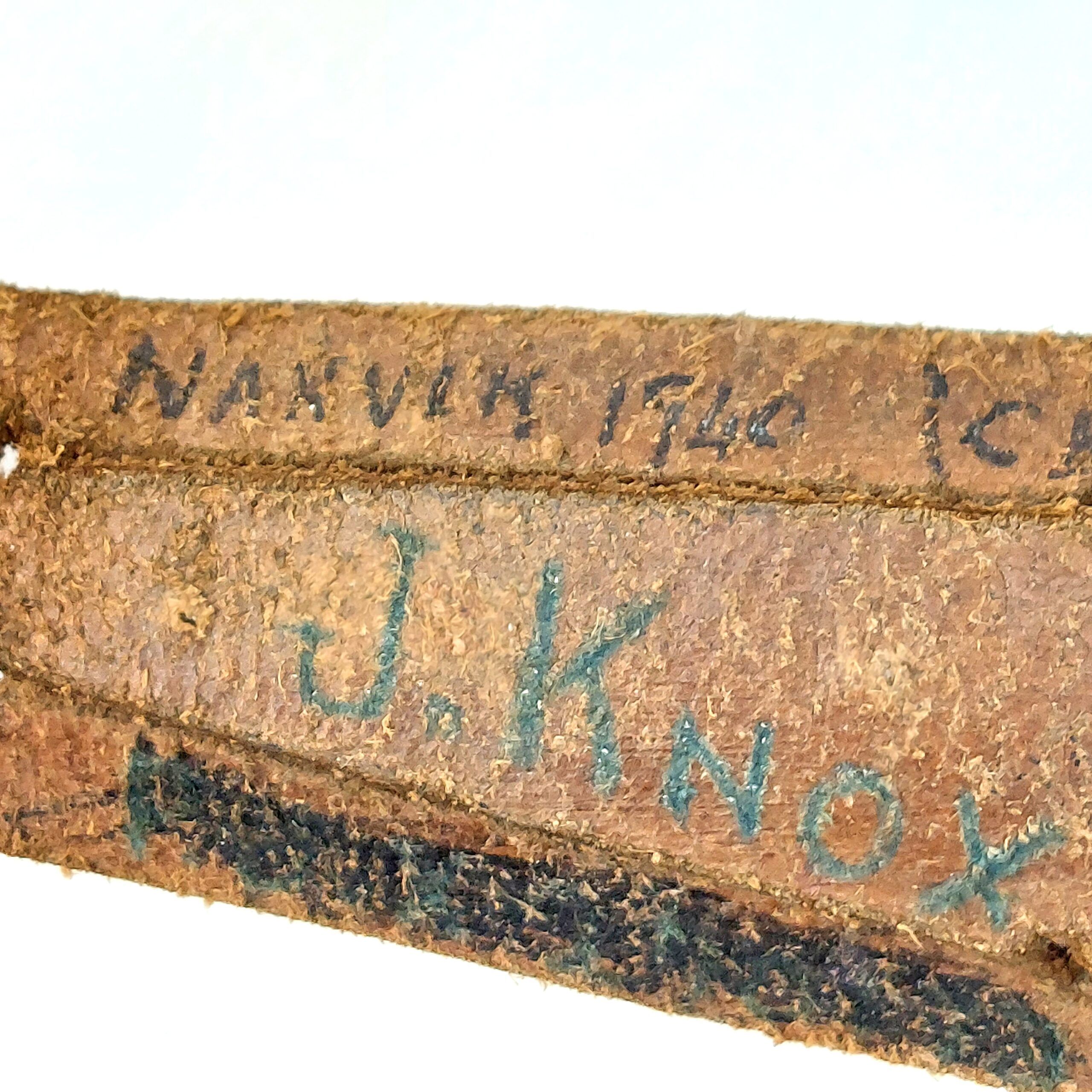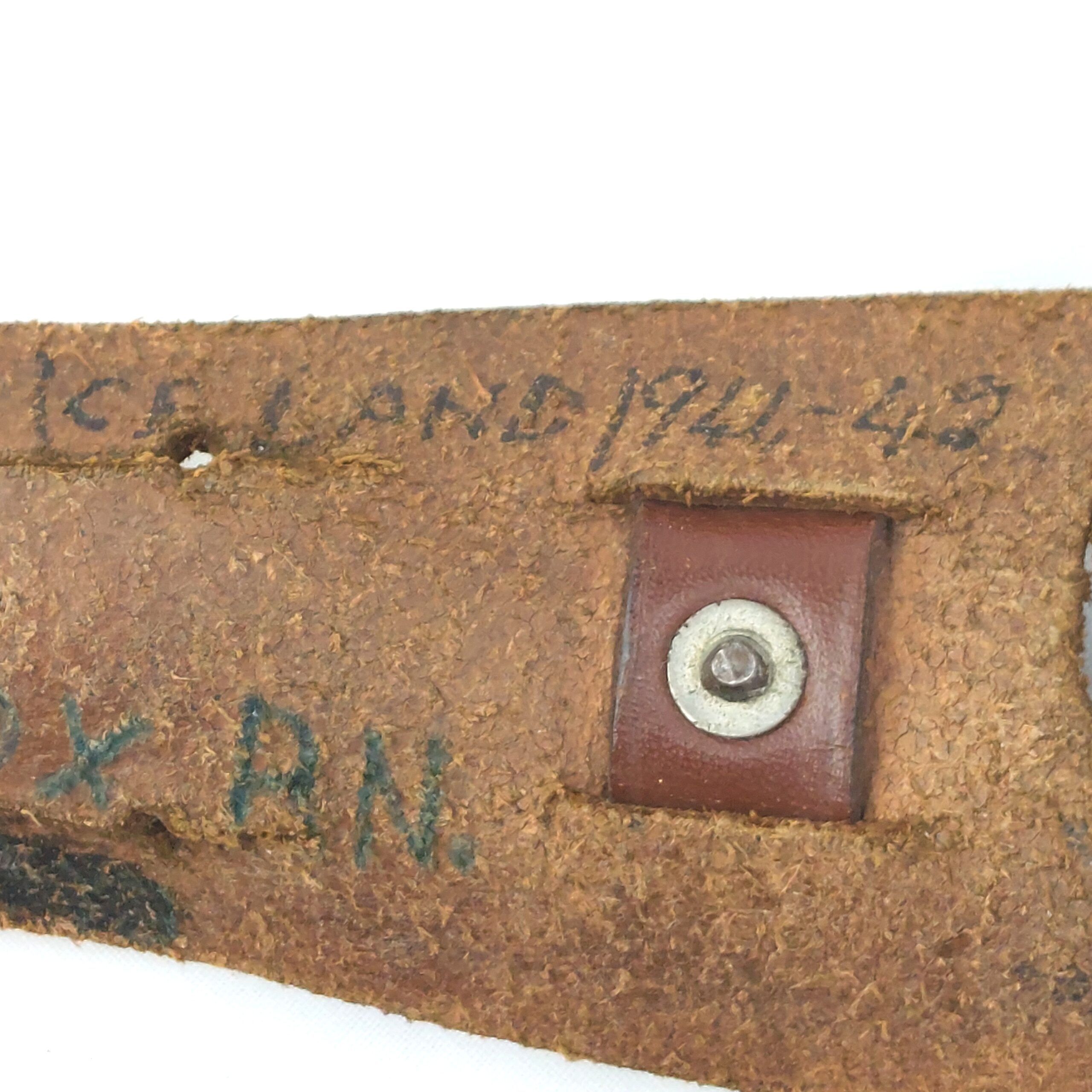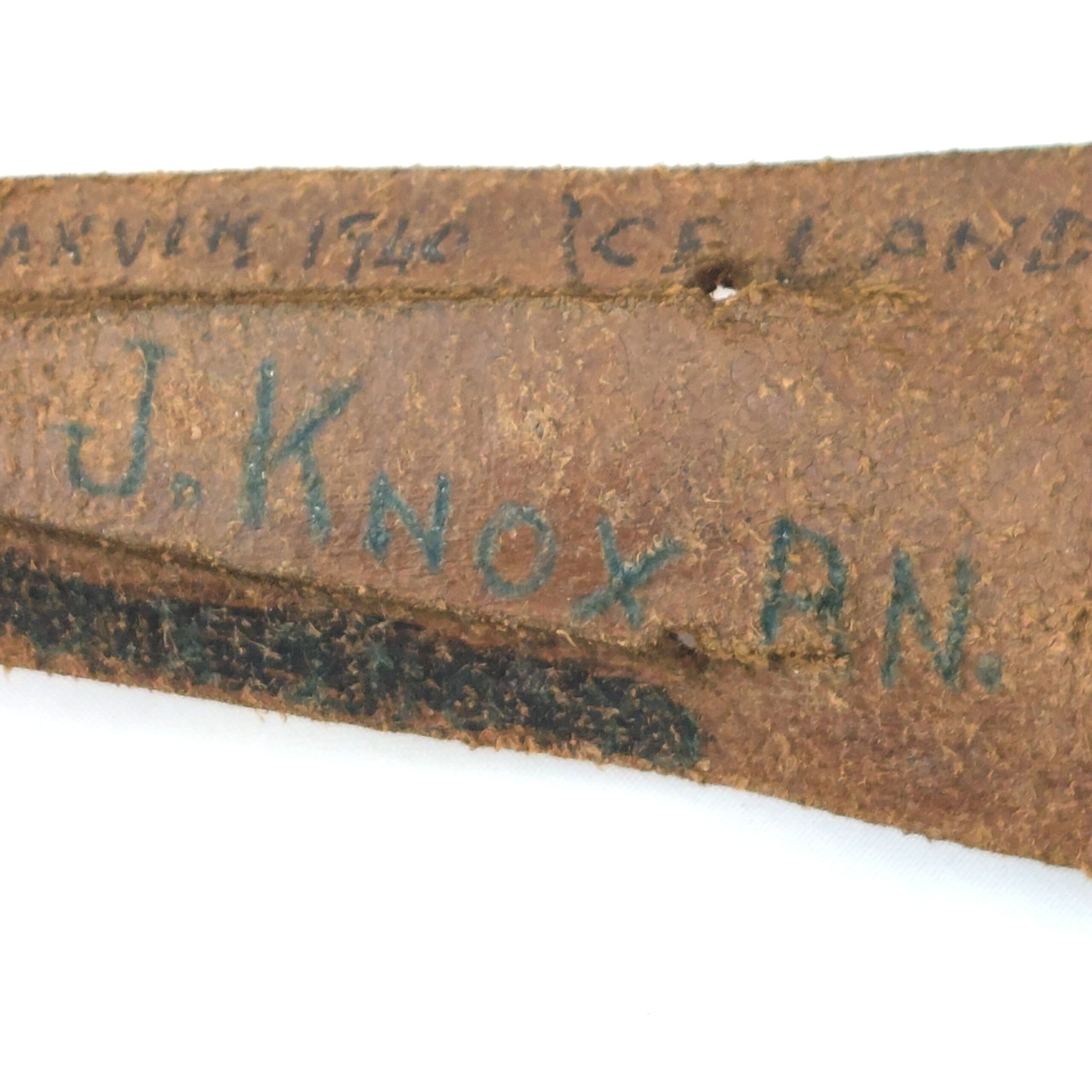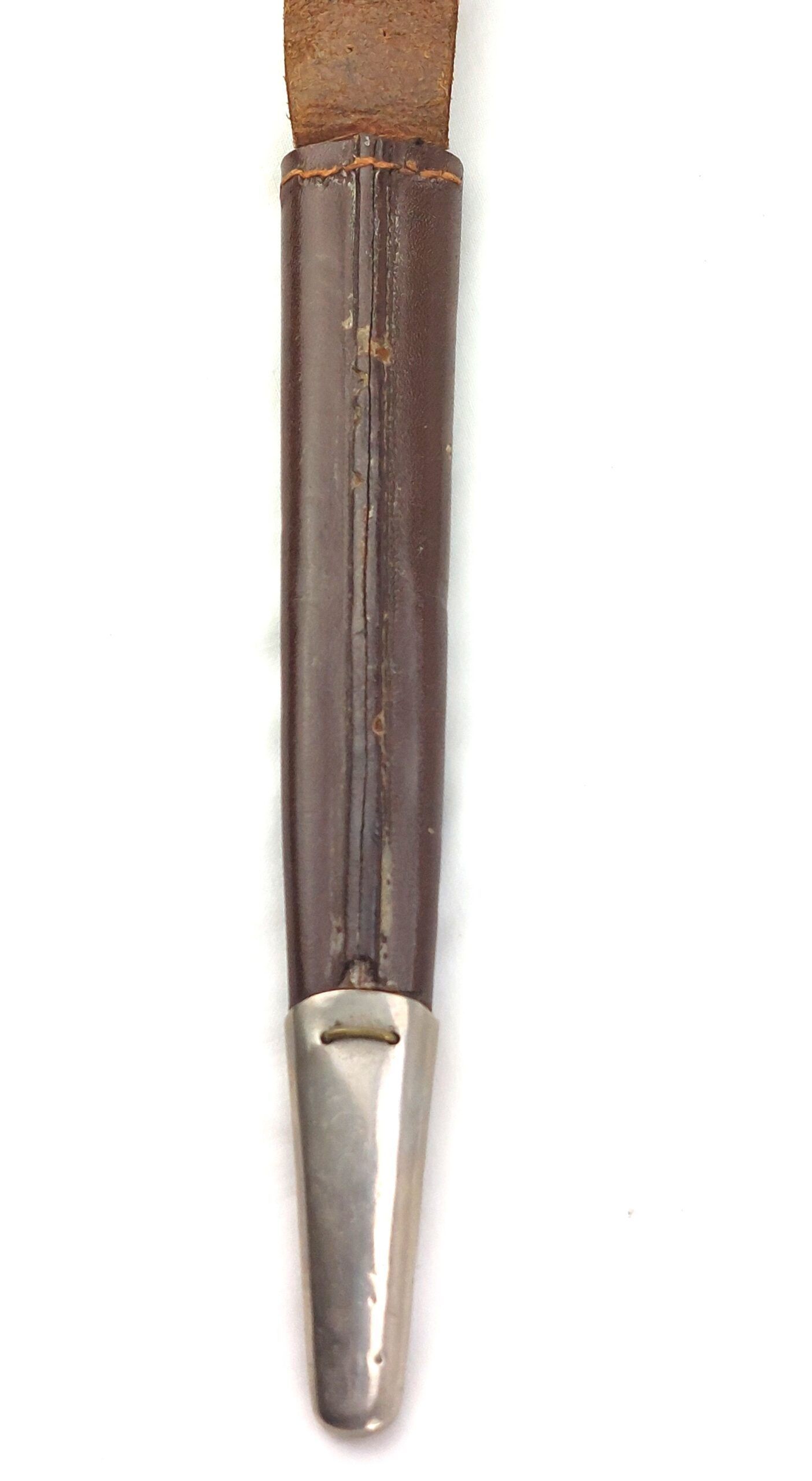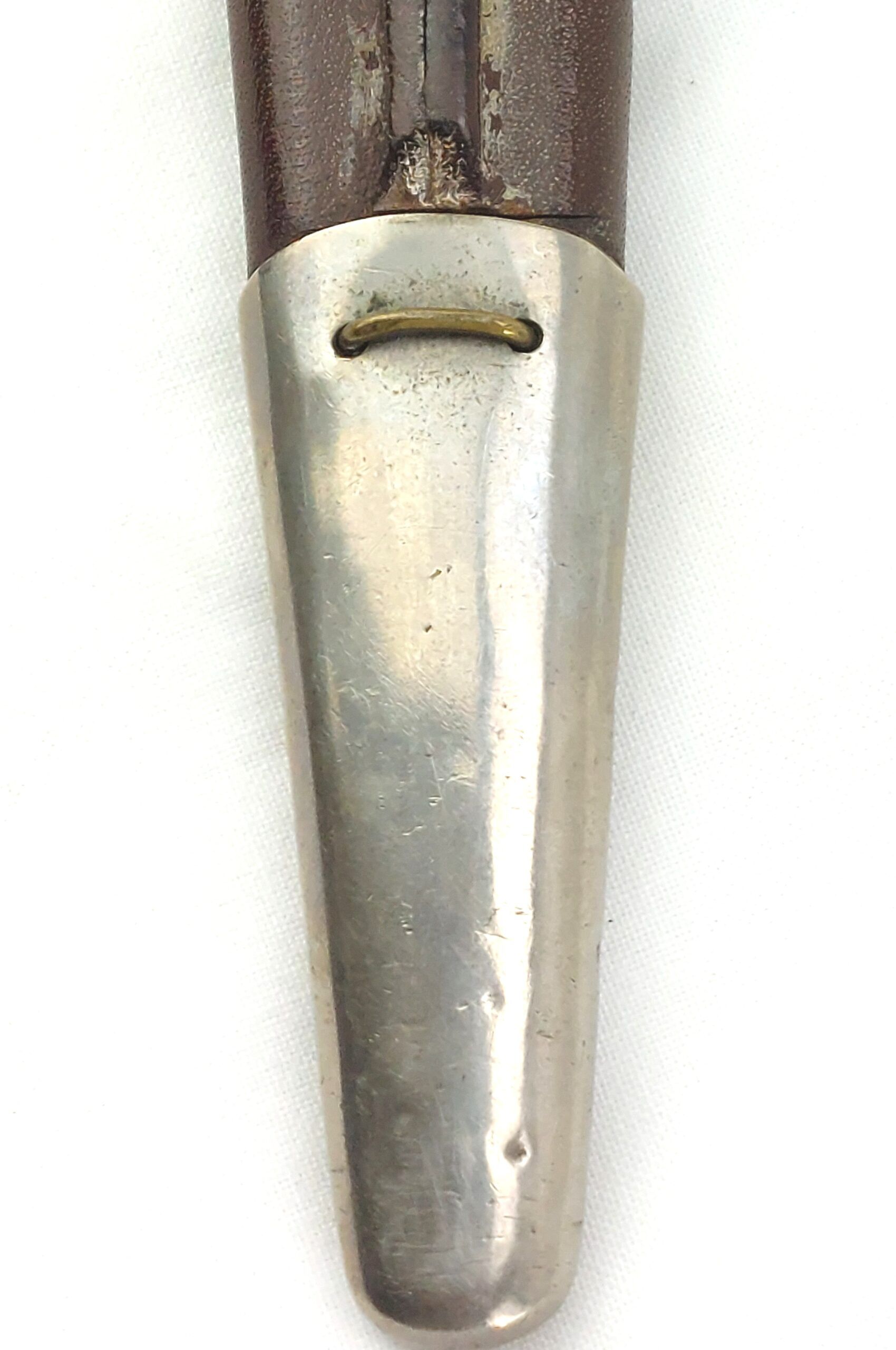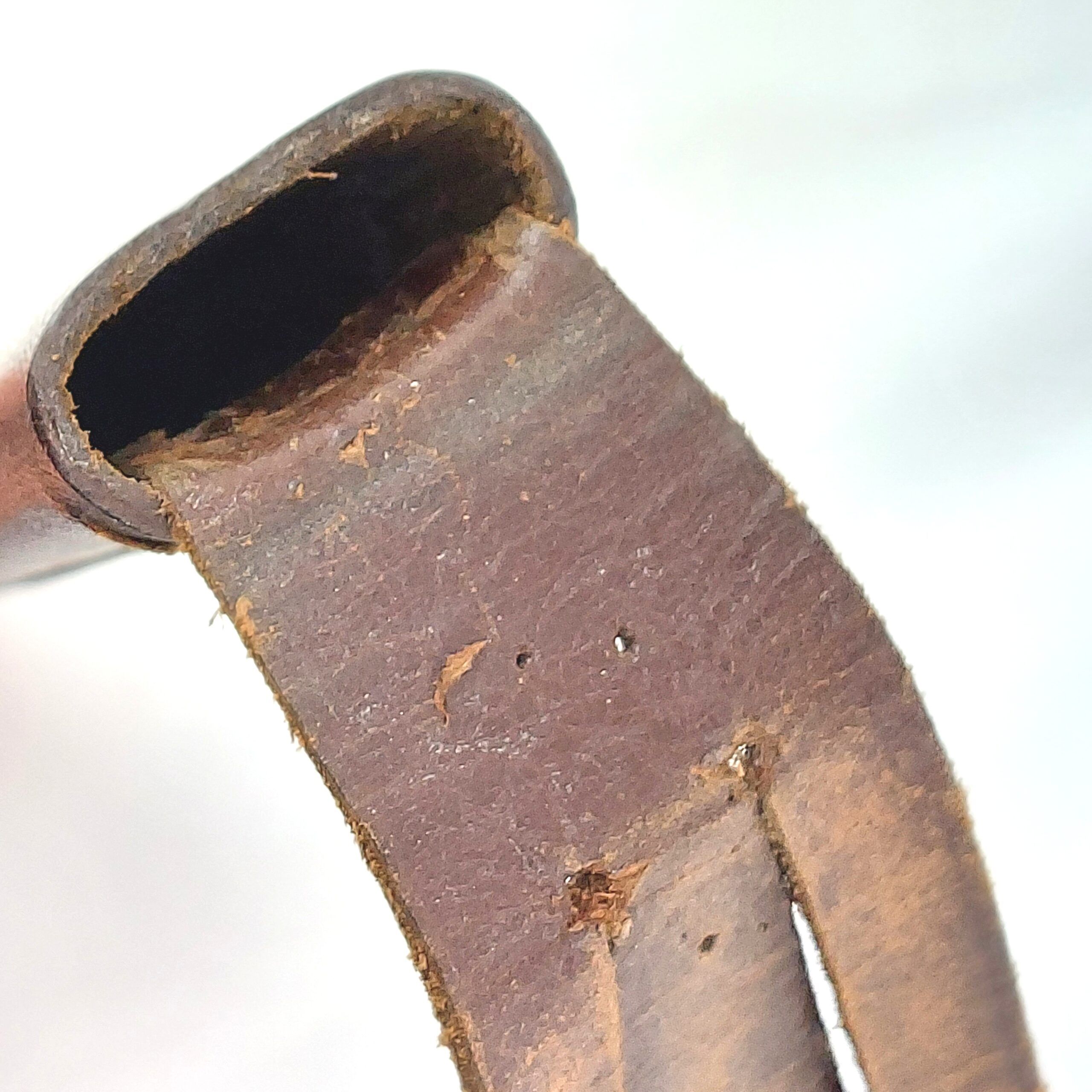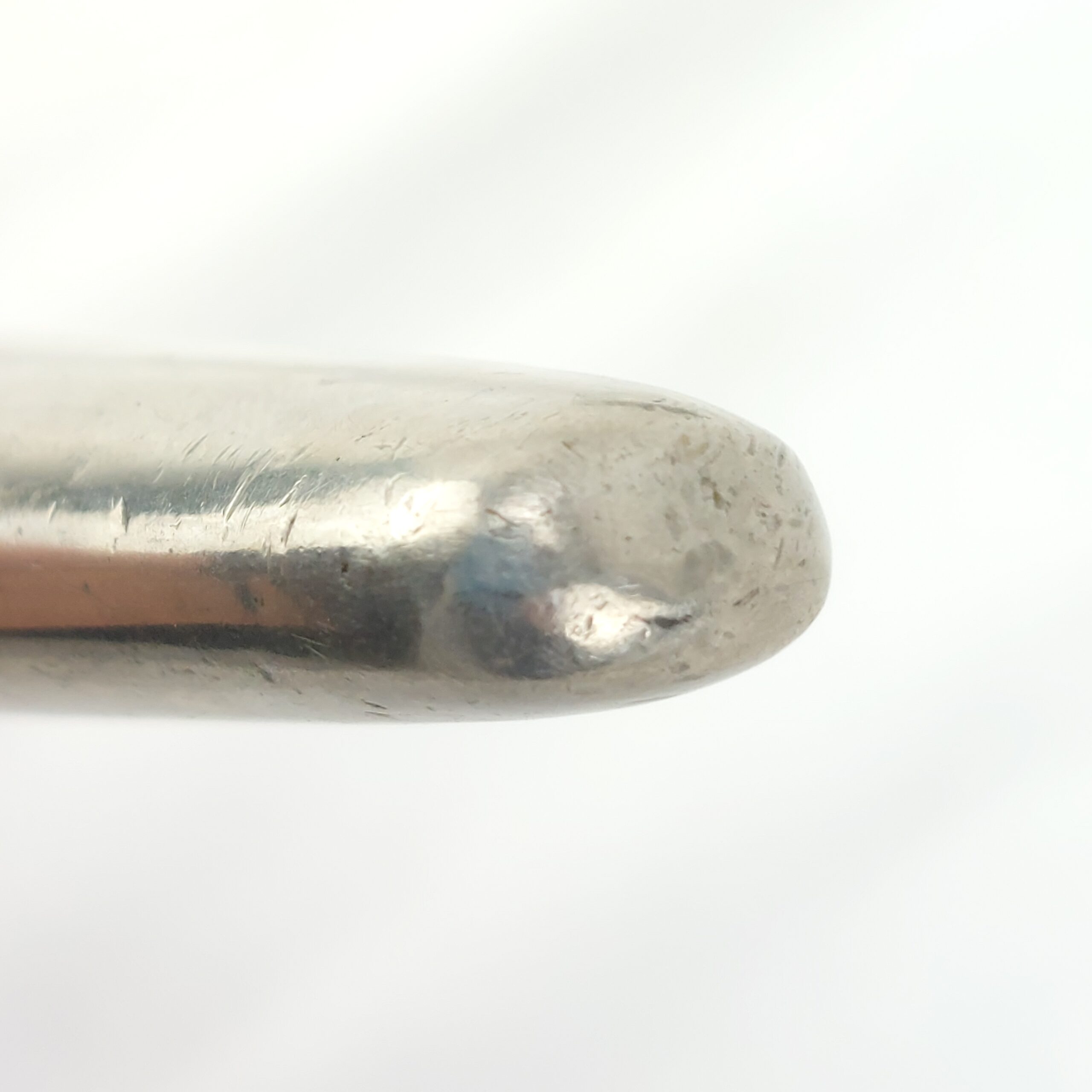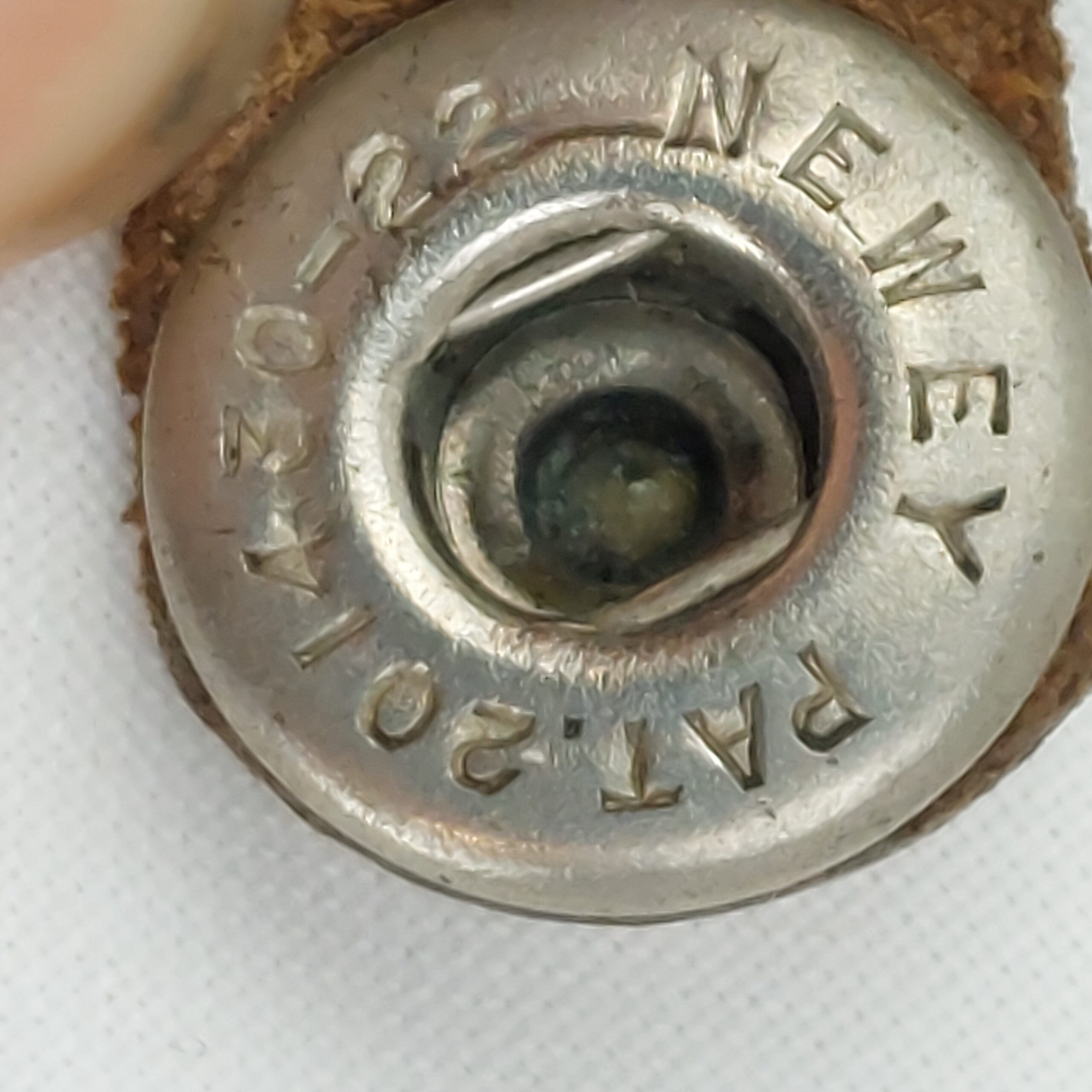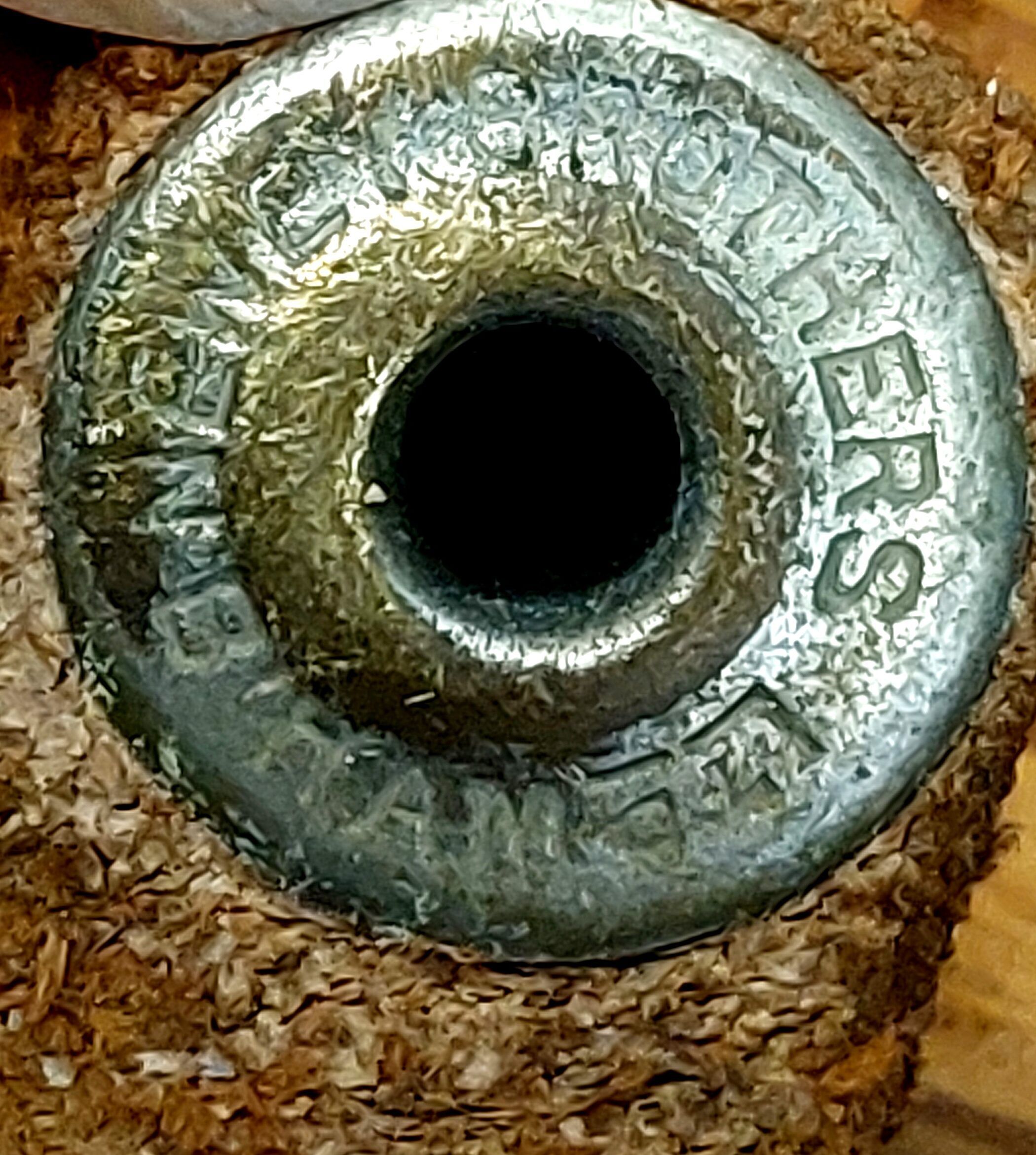*British, WW2, 1st Pattern Fairbairn Sykes Fighting Knife by Wilkinson Sword Company London, with Original Sheath Marked J. Knox RN, Narvik 1940, Iceland 1941-42, Excellent Condition*
30cm overall, 17cm blade.
Marked on the ricasso: The F-S, Fighting Knife
Marked on the obverse: Wilkinson Sword, Co Ltd, London
Marked in pen on the back of the sheath: J. Knox RN, Narvin 1940, Iceland 1941-42 and a crossed out word.
Sheath with Newey press studs: Newey Pat.201430-22. Newey Brothers Ltd B’Ham.
This is a particularly fine example 1st Pattern Fairbairn Sykes Fighting Knife with a gentle S cross guard and beautifully tapered blade. It is even more exceptional to find a 1st pattern F-S with its original early sheath.
Production of the First Pattern knives began in November 1940, merging the proposed Shanghai design by William Fairbairn and Anthony Sykes with earlier daggers from the Wilkinson Sword Co. Despite the high demand, each blade was hand-forged and hand-ground, leading to significant variations. The square ricassos were etched with the Wilkinson Sword Co. and F~S logo, and the blades were meticulously polished and sharpened. The nickel-plated steel “S” crossguards were expertly fitted to the ricasso and tang. Handles were lathe-turned from brass stock, knurled, nickel-plated, and slid over the tang, with all components secured by a nickel-plated top nut and the remaining tang peened to prevent loosening.
Shortly after the planning meeting on November 14, 1940, Wilkinson placed the first official order for F-S knives. Production of the First Pattern continued until the Second Pattern was introduced on August 12, 1941. During these nine months, fewer than 7,000 First Pattern knives were made, and it is estimated that only about 7% survive today. First Pattern knives are exceptionally rare compared to the hundreds of thousands produced of the Second and Third Patterns.
The sheath is an essential component of the Commando knife. This particular sheath appears to be from an early run, lacking the four tabs that were added later for sewing into a pocket or onto a soldier’s gear. Initially, the grip of the 1st Pattern F-S knife was secured with tabs using Newey press studs, similar to those found on typical hunting knife sheaths. However, this method was soon replaced with a more cost-effective and noiseless solution: elastic bands sewn onto each side of the sheath, which became the standard for the 2nd Pattern. First Pattern sheaths featured a well-crafted and nickel-plated chape, designed to prevent the blade’s tip from pushing through and injuring the wearer, with a rounded end. The leather components were cut by Wilkinson and other manufacturers and often sewn together by the relatives of Wilkinson employees. These sheaths were sold for 4/6.
Narvik
In the spring of 1940, the Royal Navy’s decisive actions in the Battle of Norway disrupted Hitler’s invasion plans. Supported by French, Norwegian, and Polish allies, the British fleet inflicted severe damage on the Kriegsmarine in the waters of Scandinavia. This convinced German naval leaders that the Kriegsmarine was incapable of supporting an invasion of Britain. The Narvik Campaign resulted in the loss of 64 ships, 86 planes, and 8,500 lives. Vice Admiral William Whitworth led the battleship HMS Warspite and nine destroyers (including HMS Bedouin, Cossack, Punjabi, and Eskimo) with aircraft from HMS Furious. On April 10, 1940, the First Battle of Narvik saw both sides lose two destroyers. However, on April 13, the British, led by HMS Warspite, sank the remaining eight German destroyers trapped in Narvik due to a fuel shortage.
Iceland
On May 10, 1940, the British invasion of Iceland, codenamed Operation Fork, was executed by the Royal Navy and Royal Marines. This preemptive action was taken to prevent Nazi Germany from using Iceland militarily after the fall of Denmark. During this period, HMS Punjabi and HMS Foxhound were stationed in Iceland.
*Condition*
This is is perhaps the finest F-S knife we have seen. It is in excellent condition given its age and service. The top knot looks like its never been removed, there is a small chip to one side which is pictured. There is some very minor discolouration to the blade. The leather sheath is in good worn condition with normal creasing and scratching plus some minor dents to the chape, there is a an irregular slit cut above the Newey retaining strap. Please see photographs as part of the condition report.
RQMDBOXEEOO_3891169204


